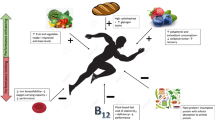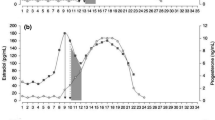Abstract
Physical inactivity during space flight or prolonged bed rest causes rapid and marked loss of bone mass in humans. Resveratrol, a red wine polyphenol that is currently under study for its therapeutic antioxidant properties, has been shown to significantly modulate biomarkers of bone metabolism, i.e., to promote osteoblast differentiation and to prevent bone loss induced by estrogen deficiency. However, there is no direct evidence supporting its inhibitory effect toward bone loss during physical inactivity. In the present study, effects of resveratrol on bone mineral density (BMD), bone mineral content, and bone structure were examined in the femora and tibiae of tail-suspended and unsuspended rats using X-ray micro-computed tomography (micro-CT). Rats were treated with 400 mg/kg/day of resveratrol for 45 days and half of them were suspended during the last 2 weeks of treatment. Suspension caused a decrease in tibial and femoral BMD and deterioration of trabecular and cortical bone. Bone deterioration during suspension was paralleled by increased bone marrow area, which could be caused by an increase in stromal cells with osteoclastogenic potential or in adipocytes. Resveratrol had a preventive effect against bone loss induced by hindlimb immobilization. In particular, trabecular bone in the proximal tibial metaphysis was totally preserved in rats treated with resveratrol before tail-suspension.


Similar content being viewed by others
References
Gu X, Creasy L, Kester A, Zeece M (1999) Capillary electrophoretic determination of resveratrol in wines. J Agric Food Chem 47:3223–3227
Gehm BD, McAndrews JM, Chien PY, Jameson JL (1997) Resveratrol, a polyphenolic compound found in grapes and wine, is an agonist for the estrogen receptor. Proc Natl Acad Sci USA 94:14138–14143
Aziz MH, Kumar R, Ahmad N (2003) Cancer chemoprevention by resveratrol: in vitro and in vivo studies and the underlying mechanisms (review). Int J Oncol 23:17–28
Pervaiz S (2003) Resveratrol: from grapevines to mammalian biology. FASEB J 17:1975–1985
Boissy P, Andersen TL, Abdallah BM, Kassem M, Plesner T, Delaissé JM (2005) Resveratrol inhibits myeloma cell growth, prevents osteoclast formation, and promotes osteoblast differentiation. Cancer Res 65:9943–9952
Liu ZP, Li WX, Yu B, Huang J, Sun J, Huo JS, Liu CX (2005) Effects of trans-resveratrol from Polygonum cuspidatum on bone loss using the ovariectomized rat model. J Med Food 8:14–19
Pearson KJ, Baur JA, Lewis KN, Peshkin L, Price NL et al (2008) Resveratrol delays age-related deterioration and mimics transcriptional aspects of dietary restriction without extending life span. Cell Metab 8:157–168
Turner RT, Evans GL, Zhang M, Maran A, Sibonga JD (1999) Is resveratrol an estrogen agonist in growing rats? Endocrinology 140:50–54
Sehmisch S, Hammer F, Christoffel J, Seidlova-Wuttke D, Tezval M, Wuttke W, Stuermer KM, Stuermer EK (2008) Comparison of the phytohormones genistein, resveratrol and 8-prenylnaringenin as agents for preventing osteoporosis. Planta Med 74:794–801
Lang T, LeBlanc A, Evans H, Lu Y, Genant H, Yu A (2004) Cortical and trabecular bone mineral loss from the spine and hip in long-duration spaceflight. J Bone Miner Res 19:1006–1012
Watanabe Y, Ohshima H, Mizuno K, Sekiguchi C, Fukunaga M, Kohri K, Rittweger J, Felsenberg D, Matsumoto T, Nakamura T (2004) Intravenous pamidronate prevents femoral bone loss and renal stone formation during 90-day bed rest. J Bone Miner Res 19:1771–1778
Smith SM, Wastney ME, Morukov BV, Larina IM, Nyquist LE, Abrams SA, Taran EN, Shih CY, Nillen JL, Davis-Street JE, Rice BL, Lane HW (1999) Calcium metabolism before, during, and after a 3-mo spaceflight: kinetic and biochemical changes. Am J Physiol 277:R1–R10
Ishijima M, Tsuji K, Rittling SR, Yamashita T, Kurosawa H, Denhardt DT, Nifuji A, Noda M (2002) Resistance to unloading-induced three-dimensional bone loss in osteopontin-deficient mice. J Bone Miner Res 17:661–667
Martin A, David V, Malaval L, Lafage-Proust MH, Vico L, Thomas T (2007) Opposite effects of leptin on bone metabolism: a dose-dependent balance related to energy intake and insulin-like growth factor-I pathway. Endocrinology 148:3419–3425
Vico L, Collet P, Guignandon A, Lafage-Proust MH, Thomas T, Rehaillia M, Alexandre C (2000) Effects of long-term microgravity exposure on cancellous and cortical weight-bearing bones of cosmonauts. Lancet 355:1607–1611
Shiiba M, Arnaud SB, Tanzawa H, Kitamura E, Yamauchi M (2002) Regional alterations of type I collagen in rat tibia induced by skeletal unloading. J Bone Miner Res 17:1639–1645
Wronski TJ, Morey-Holton ER (1987) Skeletal response to simulated weightlessness: a comparison of suspension techniques. Aviat Space Environ Med 58:63–68
Brasse D, Humbert B, Mathelin C, Rio MC, Guyonnet JL (2005) Towards an inline reconstruction architecture for micro-CT systems. Phys Med Biol 50:5799–5811
Cann CE, Genant HK (1980) Precise measurement of vertebral mineral content using computed tomography. J Comput Assist Tomogr 4:493–500
Umoh JU, Sampaio AV, Welch I, Pitelka V, Goldberg HA, Underhill TM, Holdsworth DW (2009) In vivo micro-CT analysis of bone remodeling in a rat calvarial defect model. Phys Med Biol 54:2147–2161
Ferretti JL (1995) Perspectives of pQCT technology associated to biomechanical studies in skeletal research employing rat models. Bone (NY) 17:353S–364S
Bloomfield SA, Allen MR, Hogan HA, Delp MD (2002) Site- and compartment-specific changes in bone with hindlimb unloading in mature adult rats. Bone (NY) 31:149–157
Barou O, Lafage-Proust MH, Martel C, Thomas T, Tirode F, Laroche N, Barbier A, Alexandre C, Vico L (1999) Bisphosphonate effects in rat unloaded hindlimb bone loss model: three-dimensional microcomputed tomographic, histomorphometric, and densitometric analyses. J Pharmacol Exp Ther 291:321–328
Wimalawansa SM, Chapa MT, Wei JN, Westlund KN, Quast MJ, Wimalawansa SJ (1999) Reversal of weightlessness-induced musculoskeletal losses with androgens: quantification by MRI. J Appl Physiol 86:1841–1846
Iwasaki Y, Yamato H, Murayama H, Sato M, Takahashi T, Ezawa I, Kurokawa K, Fukagawa M (2002) Maintenance of trabecular structure and bone volume by vitamin K(2) in mature rats with long-term tail suspension. J Bone Miner Metab 20:216–222
Albright F, Smith PH, Richardson AM (1941) Postmenopausal osteoporosis: its clinical features. JAMA 116:2465–2474
Slemenda C, Hui SL, Longcope C, Johnston CC (1987) Sex steroids and bone mass. A study of changes about the time of menopause. J Clin Invest 80:1265–1269
Orbak Z, Yildirim H, Zor N (1998) Puberty and mineralization of the skeleton in girls. J Pediatr Endocrinol Metab 11:421–425
Schiessl H, Frost HM, Jee WSS (1998) Estrogen and bone-muscle strength and mass relationships. Bone (NY) 22:1–6
Damien E, Price JS, Lanyon LE (2000) Mechanical strain stimulates osteoblast proliferation through the estrogen receptor in males as well as females. J Bone Miner Res 15:2169–2177
Zaman G, Cheng MZ, Jessop HL, White R, Lanyon LE (2000) Mechanical strain activates estrogen response elements in bone cells. Bone (NY) 27:233–239
Klein-Nulend J, van der Plas A, Semeins CM, Ajubi NE, Frangos JA, Nijweide PJ, Burger EH (1995) Sensitivity of osteocytes to biomechanical stress in vitro. FASEB J 9:441–445
Carmeliet G, Nys G, Stockmans I, Bouillon R (1998) Gene expression related to the differentiation of osteoblastic cells is altered by microgravity. Bone (NY) 22:139S–143S
Zhang R, Supowit SC, Klein GL, Lu Z, Christensen MD, Lozano R, Simmons DJ (1995) Rat tail suspension reduces messenger RNA level for growth factors and osteopontin and decreases the osteoblastic differentiation of bone marrow stromal cells. J Bone Miner Res 10:415–423
Friedenstein AJ, Chailakhyan RK, Gerasimov UV (1987) Bone marrow osteogenic stem cells: in vitro cultivation and transplantation in diffusion chambers. Cell Tissue Kinet 20:263–272
Owen ME, Cavé J, Joyner CJ (1987) Clonal analysis in vitro of osteogenic differentiation of marrow CFU-F. J Cell Sci 87:731–738
Roodman GD, Ibbotson KJ, MacDonald BR, Kuehl TJ, Mundy GR (1985) 1,25-Dihydroxyvitamin D3 causes formation of multinucleated cells with several osteoclast characteristics in cultures of primate marrow. Proc Natl Acad Sci USA 82:8213–8217
Machwate M, Zerath E, Holy X, Hott M, Modrowski D, Malouvier A, Marie PJ (1993) Skeletal unloading in rat decreases proliferation of rat bone and marrow-derived osteoblastic cells. Am J Physiol 264:E790–E799
Morey ER, Baylink DJ (1978) Inhibition of bone formation during space flight. Science 201:1138–1141
Minaire P (1989) Immobilization osteoporosis: a review. Clin Rheumatol 8:95–103
Ahdjoudj S, Lasmoles F, Holy X, Zerath E, Marie PJ (2002) Transforming growth factor beta2 inhibits adipocyte differentiation induced by skeletal unloading in rat bone marrow stroma. J Bone Miner Res 17:668–677
Acknowledgments
We thank Bruno Jessel and Mathieu Baicry for their excellent technical assistance. This work was supported by the Alsace region and the Centre National des Etudes Spatiales (financial support to Stéphane Blanc, IPHC, and postdoctoral salary to I.M.).
Author information
Authors and Affiliations
Corresponding author
About this article
Cite this article
Habold, C., Momken, I., Ouadi, A. et al. Effect of prior treatment with resveratrol on density and structure of rat long bones under tail-suspension. J Bone Miner Metab 29, 15–22 (2011). https://doi.org/10.1007/s00774-010-0187-y
Received:
Accepted:
Published:
Issue Date:
DOI: https://doi.org/10.1007/s00774-010-0187-y




